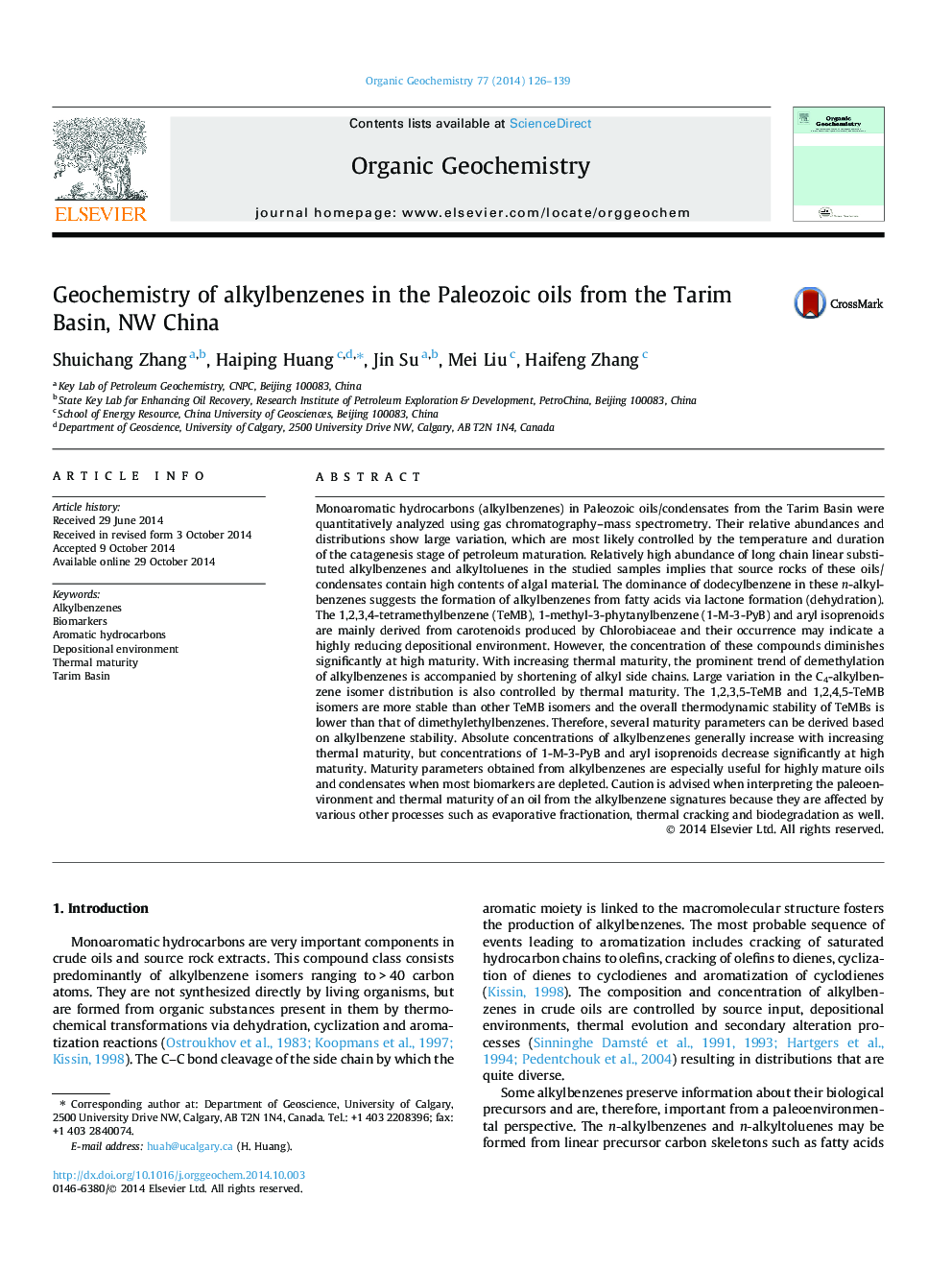| Article ID | Journal | Published Year | Pages | File Type |
|---|---|---|---|---|
| 5161780 | Organic Geochemistry | 2014 | 14 Pages |
Abstract
Monoaromatic hydrocarbons (alkylbenzenes) in Paleozoic oils/condensates from the Tarim Basin were quantitatively analyzed using gas chromatography-mass spectrometry. Their relative abundances and distributions show large variation, which are most likely controlled by the temperature and duration of the catagenesis stage of petroleum maturation. Relatively high abundance of long chain linear substituted alkylbenzenes and alkyltoluenes in the studied samples implies that source rocks of these oils/condensates contain high contents of algal material. The dominance of dodecylbenzene in these n-alkylbenzenes suggests the formation of alkylbenzenes from fatty acids via lactone formation (dehydration). The 1,2,3,4-tetramethylbenzene (TeMB), 1-methyl-3-phytanylbenzene (1-M-3-PyB) and aryl isoprenoids are mainly derived from carotenoids produced by Chlorobiaceae and their occurrence may indicate a highly reducing depositional environment. However, the concentration of these compounds diminishes significantly at high maturity. With increasing thermal maturity, the prominent trend of demethylation of alkylbenzenes is accompanied by shortening of alkyl side chains. Large variation in the C4-alkylbenzene isomer distribution is also controlled by thermal maturity. The 1,2,3,5-TeMB and 1,2,4,5-TeMB isomers are more stable than other TeMB isomers and the overall thermodynamic stability of TeMBs is lower than that of dimethylethylbenzenes. Therefore, several maturity parameters can be derived based on alkylbenzene stability. Absolute concentrations of alkylbenzenes generally increase with increasing thermal maturity, but concentrations of 1-M-3-PyB and aryl isoprenoids decrease significantly at high maturity. Maturity parameters obtained from alkylbenzenes are especially useful for highly mature oils and condensates when most biomarkers are depleted. Caution is advised when interpreting the paleoenvironment and thermal maturity of an oil from the alkylbenzene signatures because they are affected by various other processes such as evaporative fractionation, thermal cracking and biodegradation as well.
Keywords
Related Topics
Physical Sciences and Engineering
Chemistry
Organic Chemistry
Authors
Shuichang Zhang, Haiping Huang, Jin Su, Mei Liu, Haifeng Zhang,
